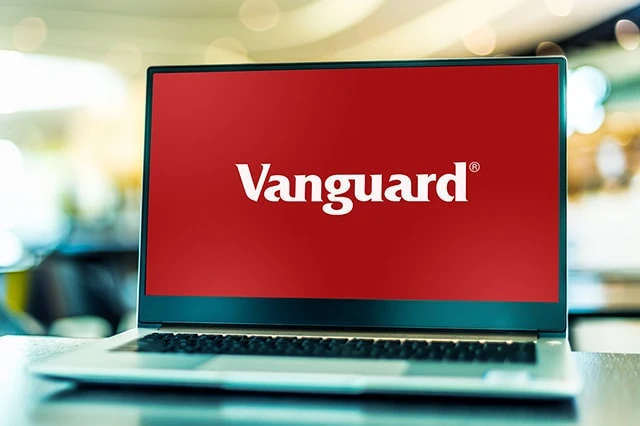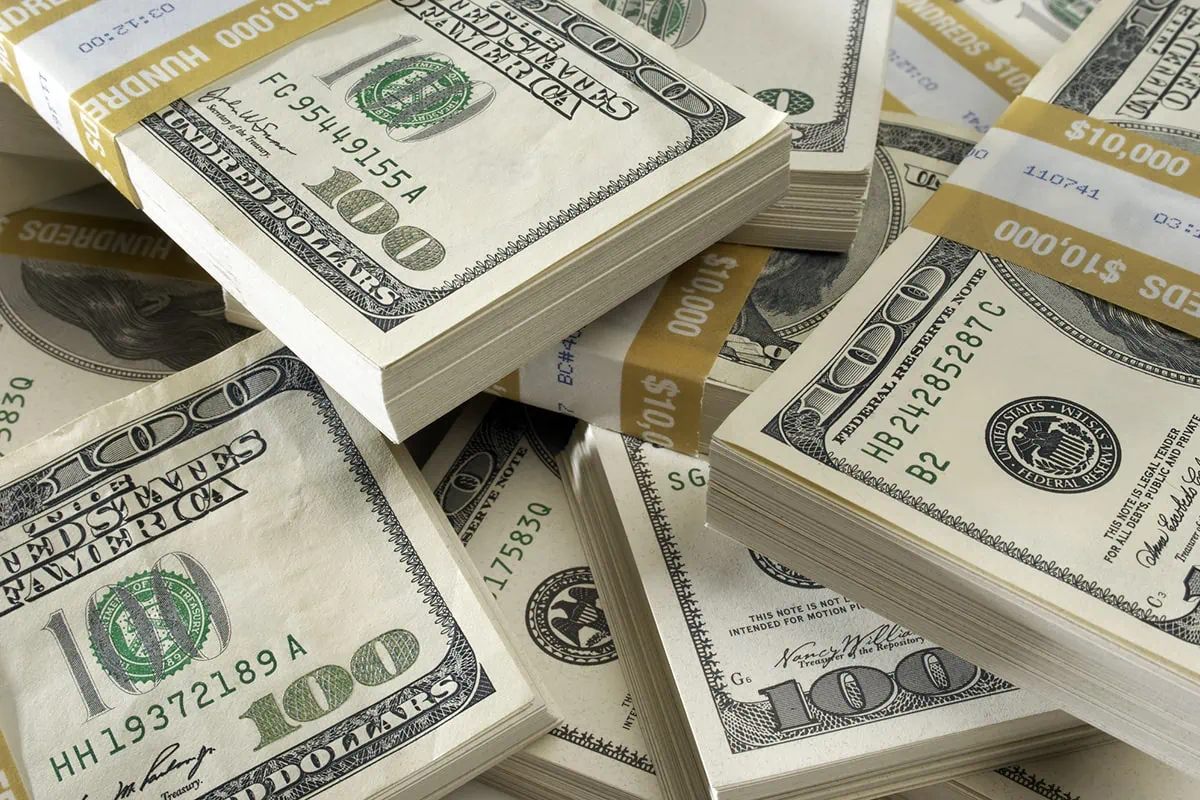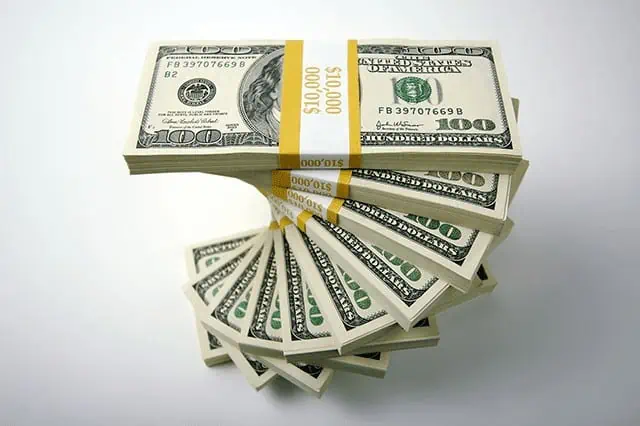Today’s premier Vanguard funds aim to provide investors with dividend income, combining attractive yields with the renowned stability and affordability Vanguard is known for.
It might seem logical to assume that all dividend mutual funds would focus primarily on the long-term dividend income of their investments. However, this isn’t always the case: Some funds offer high dividends currently but may be susceptible to significant volatility or potential reductions in their future distributions. Therefore, selecting dividend-paying mutual funds requires looking beyond their current yield percentages.
I’ve taken some of the guesswork out of your to-do list, however, by thinning the herd down to a select group of the top dividend-focused funds offered by Vanguard. Among factors I’ve looked at: each fund’s dividend growth rate, expense ratio, and—because it still matters—current headline yield.
The result is a list of dividend mutual funds that should serve you well regardless of any stock market ups and downs.
Disclaimer: This article does not constitute individualized investment advice. These funds appear for your consideration and not as investment recommendations. Act at your own discretion.
Editor’s Note: The tabular data shown in this article is up-to-date as of Aug. 31, 2024.
Table of Contents
Why Invest in Dividend Stocks Via Mutual Funds?

The best dividend mutual funds offer investors a way to invest in a group of high-quality stocks that pay above-average dividends with just one purchase.
As a group, dividend stocks are pretty common, but they’re not created equally. Sure, you can find some stocks with a good, sustainable yield and growing payouts. But some only pay nominal dividends that are just a penny or two per share, with no prospect for dividend growth anytime soon. Others might offer generous but unsustainable dividend payouts that might be eliminated altogether in the future.
That’s why mutual funds are a good alternative to individual dividend stocks. These vehicles spread your money around, rather than force you to rely on one company’s specific strengths and weaknesses. And finding the best stocks capable of consistently paying dividends and enjoying significant future dividend growth can be a daunting task, even for seasoned investors. So instead, why not try to gain exposure to dividend-paying stocks via a single, diversified holding that’s tasked with finding great companies for you?
That’s what you’ll get from many of Vanguard’s dividend-focused funds.
Why Vanguard?

Vanguard Group is a leader in index funds, which are simply funds that track a rules-based index, like the S&P 500.
In 1976, Vanguard founder Jack Bogle launched the first Vanguard index fund for U.S. retail investors—the Vanguard First Index Investment Trust, which is now the Vanguard 500 Index Fund Admiral Shares (VFIAX)—and in the four-and-a-half decades that have followed, Vanguard Funds have grown to become the dominant force in index investing.
Today, this financial behemoth has about $9 trillion in assets under management with an average expense ratio of just 0.08%, or a mere $8 for every $10,000 invested. There are currently 424 Vanguard funds, including mutual funds and ETFs. And Vanguard index funds cover every conceivable pocket of the investable universe, including individual sector funds and emerging markets.
Vanguard grew into the powerhouse mutual fund company it is today by taking care of its clients and genuinely looking after their interests. Vanguard funds really started (and continue to accelerate) the trend of fee compression. We all collectively pay less in fees and expenses and enjoy better returns because of the index revolution started and led by Vanguard’s founder Jack Bogle.
Today, I’m going to take a look at the very top dividend funds offered by Vanguard. But you can also find a host of other index funds and investing options for strategies of all shapes and sizes. Whatever your tactics, however, you can have confidence that Vanguard will offer significant scale and rock-bottom fees via its investment options.
Our Favorite Vanguard Income-Focused Funds

When deciding on the best Vanguard dividend mutual funds, I tried to offer a variety of strategies and flavors without lowering our standards. All of these picks are established dividend investments with low cost structures, so you can invest with confidence in one or more of these options if they align with your personal investing needs.
Related: The 7 Best Mutual Funds for Beginners in 2024
Please note that many of the best Vanguard mutual funds also offer an exchange-traded version. Vanguard ETFs also provide instant diversification for extremely low fees, so where appropriate, I’ve mentioned exchange-traded alternatives for the top dividend funds that Vanguard offers to provide flexibility for those who might need it.
1. Vanguard Dividend Appreciation Index Fund Admiral Shares

— Type: Domestic large-cap stock
— Assets under management: $15.3 billion
— Expense ratio: 0.08%, or $8 per year for every $10,000 invested
— Dividend yield: 1.7%
— Minimum initial investment: $3,000
On the surface, you might look at the Vanguard Dividend Appreciation Index Fund Admiral Shares (VDADX) and come away unimpressed. After all, the yield is only a hair larger than that of the vanilla S&P 500 Index. And while the portfolio is a little more selective, with only around 315 total holdings at present, this dividend fund holds a lot of the same names you’ll find in the typical large-cap mutual fund, including Apple (AAPL) and Microsoft (MSFT).
Related: The 7 Best Dividend ETFs [Get Income + Diversify]
VDADX, which tracks the S&P U.S. Dividend Growers Index, focuses on high-quality companies that have ample headroom in their profits to raise dividends as well as a track record of recent increases. Hence the “dividend appreciation” in its name. In other words: The current yield might be modest, but the future yield on cost (the yield on the price you originally paid) could be significantly higher after you buy in.
Related: The 9 Best Dividend Stocks for Beginners
VDADX has an exchange-traded version, the Vanguard Dividend Appreciation ETF (VIG, 0.06% expense ratio), that ranks as one of the 20 largest U.S. ETFs of any flavor as measured by assets. That reinforces the popularity of this strategy, even if the current yield doesn’t blow your hair back.
2. Vanguard Dividend Growth Fund

— Type: Domestic large-cap stock
— Assets under management: $54.6 billion
— Expense ratio: 0.30%, or $30 per year for every $10,000 invested
— Dividend yield: 1.6%
— Minimum initial investment: $3,000
Another fund that needs a bit of explaining to make sense is the Vanguard Dividend Growth Fund (VDIGX).
For one, VDIGX isn’t an index fund—it’s actively managed by Wellington Management Company’s Donald J. Kilbride and Peter C. Fisher. So rather than having to strictly follow rules like VDADX does with its benchmark index, Kilbride and Fisher have full discretion to build a portfolio of dividend growth stocks as they see fit.
Related: 12 Best Long-Term Stocks to Buy and Hold Forever
This top dividend fund offers a yield that is just a tad lower than the prior fund. And even more confusing is the fact that it has a very short list of components, with just under 50 stocks in its portfolio at present.
Related: 13 Dividend Kings for Royally Resilient Income
Once again, however, it’s all about future payouts. Take one of the fund’s top components, medical device firm Stryker (SYK). The company paid 80 cents in its quarterly distribution in March, which is up significantly from the 63 cents it was paying in early 2022 and more than double the 34.5 cents paid in 2015. The headline yield might be a paltry 0.9% right now, but that growth is what matters most.
VDIGX is laser-focused on companies with a recent track record of significant dividend growth, which might be attractive to some investors. And, in fact, many of its holdings—including McDonald’s (MCD) and Colgate-Palmolive (CL)—are Dividend Aristocrats with 25 or more years of uninterrupted dividend growth. We cover the even more vaunted group of dividend payers, called Dividend Kings—these stocks have had 50 or more years of consecutive dividend growth.
3. Vanguard High Dividend Yield Index Fund Admiral Shares

— Type: Domestic large-cap stock
— Assets under management: $13.7 billion
— Expense ratio: 0.08%, or $8 per year for every $10,000 invested
— Dividend yield: 2.8%
— Minimum initial investment: $3,000
The Vanguard High Dividend Yield Index Fund Admiral Shares (VHYAX) is, as the name implies, more concerned with raising that dividend yield higher than the prior funds. It does so through a list of nearly 450 total components that are picked based on their current income potential—not hopes of bigger future paydays (though some holdings do grow their dividends, too).
Related: 7 High-Quality, High-Yield Dividend Stocks
That means this high-dividend-yield mutual fund excludes companies like Apple that pay dividends but offer only modest yield, and instead has a bias toward companies such as JPMorgan Chase (JPM) that pay significantly more than the average large-cap stock.
In fact, nearly 20% of all VHYAX assets are in the financial sector, while just 8% is in technology. This is a much different mix than you’ll find in typical large-cap stock funds, which tend to be heavy on Big Tech mainstays. So be aware of these and other sector weightings as you consider how to layer this Vanguard fund into your big-picture strategy.
Related: 10 Best Dividend Stocks to Buy [Steady Eddies]
This is also offered in ETF form: The Vanguard High Dividend Yield ETF (VYM) costs 0.06% annually.
4. Vanguard Equity-Income Fund Investor Shares

— Type: Domestic large-cap stock
— Assets under management: $5.2 billion
— Expense ratio: 0.27%, or $27 per year for every $10,000 invested
— Dividend yield: 2.6%
— Minimum initial investment: $3,000
Giving Vanguard dividend fund investors yet another option, Vanguard Equity Income Fund Investor Shares (VEIPX) is an actively managed option with about 180 total holdings that represent some of the biggest names on Wall Street. Leading the portfolio at present are mega-bank JPMorgan Chase, healthcare icon Johnson & Johnson (JNJ), and Big Pharma mainstay Merck (MRK).
Related: Best Vanguard Retirement Funds for a 401(k) Plan
You do face certain risks when you put your money behind an actively managed fund instead of an index fund, particularly given the long history of active managers underperforming their passive benchmarks. However, some investors prefer the peace of mind that comes with knowing someone is hand-picking components—particularly in the area of dividend stocks, where there’s a delicate balance between current yield and future payout potential.
Related: The 9 Best Dividend Stocks for Beginners
You should also note that, if you have a lot of money to invest, you can get this same fund at a lower cost. Specifically, the Admiral Shares charge just 0.19% in annual expenses, though you need $50,000 to invest, versus just $3,000 for the VEIPX Investor Shares. Most smaller-money investors might prefer to shoulder the high fees rather than put all their eggs in a cheaper basket.
5. Vanguard Energy Fund Investor Shares

— Type: Sector (Energy)
— Assets under management: $1.9 billion
— Expense ratio: 0.46%, or $46 per year for every $10,000 invested
— Dividend yield: 3.5%
— Minimum initial investment: $3,000
One of the corners of Wall Street that commonly carries above-average dividends is the energy sector. And believe it or not, Vanguard offers a traditional, actively managed mutual fund that is dedicated wholly to energy stocks—and delivers a pretty nice yield as a result.
Related: 12 Best Investment Opportunities for Accredited Investors
Built with a focused list of roughly 50 of the largest energy stocks in the world, Vanguard Energy Fund Investor Shares’ (VGENX) portfolio is full of familiar names like domestic production firm ConocoPhillips (COP) as well as Big Oil companies from overseas like Shell (SHEL) and BP (BP).
This strategy comes with a bit more risk—the prior funds are diversified across many sectors, while VGENX is fully concentrated in just one. However, it’s a way to participate in higher oil and gas prices, and there are worse ways to get a steady stream of income than to focus on the biggest stocks in international energy markets.
Related: 12 Best Long-Term Stocks to Buy and Hold Forever
VGENX is another Vanguard dividend fund that has a lower-cost Admiral offering (0.16% in annual expenses), but again, it requires a $50,000 investment minimum.
Learn More About These and Other Funds With Morningstar Investor

If you’re buying a fund you plan on holding for years (if not forever), you want to know you’re making the right selection. And Morningstar Investor can help you do that.
Morningstar Investor provides a wealth of information and comparable data points about mutual funds and ETFs—fees, risk, portfolio composition, performance, distributions, and more. Morningstar experts also provide detailed explanations and analysis of many of the funds the site covers.
With Morningstar Investor, you’ll enjoy a wealth of features, including Morningstar Portfolio X-Ray®, stock and fund watchlists, news and commentary, screeners, and more. And you can try it before you buy it. Right now, Morningstar Investor is offering a free seven-day trial. You can check out the current deal, as well as discounted rates for students and teachers, on Morningstar Investor’s website.
How are the Top Dividend-Focused Funds From Vanguard Different From “Income” Funds?

Many investors have seen funds branded as “income” funds, and it’s easy to get confused. That’s because dividends from stocks are just one way of producing income from your portfolio.
The other major way is to own bonds, which are pooled debt instruments where the company is the borrower who pays interest on that debt to the investor on a regular basis. Beyond that there are also other instruments including preferred stock, or even real estate and private equity investments.
For the purpose of this list, we focused purely on dividends – which are profit-sharing distributions to shareholders of common stock. Those other asset classes all come with their own unique risks, and shouldn’t be seen as interchangeable with the potential risks and rewards delivered by dividend stocks or the mutual funds that hold them.
What Is the Minimum Investment Amount on Vanguard Mutual Funds?

Vanguard funds are known for being shareholder-friendly. The Vanguard mutual fund company blazed new trails with the index fund, and Vanguard has done more than any other investment firm to keep costs to a minimum for investors.
But there is one hitch. Many of Vanguard’s cheapest funds in terms of fees have initial investment minimums of around $3,000.
If that is a problem for you, don’t sweat it. Most popular Vanguard index funds are also available as ETFs. Most brokers will allow you to buy as little as one share, and some even allow for fractional shares. And if you use a commission-free brokerage, you can buy those ETFs without incurring additional fees. ETF prices vary, of course, but many cost less than $100, and they rarely exceed $400 per share.
Why Does a Fund’s Expense Ratio Matter So Much?

Every dollar you pay in expenses is a dollar that comes directly out of your returns. So, it is absolutely in your best interests to keep your expense ratios to an absolute minimum.
The expense ratio is the percentage of your investment lost each year to management fees, trading expenses and other fund expenses. Because index funds are passively managed and don’t have large staffs of portfolio managers and analysts to pay, they tend to have some of the lowest expense ratios of all mutual funds.
This matters because every dollar not lost to expenses is a dollar that is available to grow and compound. And over an investing lifetime, even a half a percent can have a huge impact. If you invest just $1,000 in a fund generating 5% per year after fees, over a 30-year horizon, it will grow to $4,116. However, if you invested $1,000 in the same fund, but it had an additional 50 basis points in fees (so it only generated 4.5% per year in returns), it would grow to only $3,584 over the same period.
Like Young and the Invested’s Content? Be sure to follow us.
What is Dividend Yield?

Dividend yield is a simple financial ratio that tells you the percentage of a company’s share price that is paid out across a year’s worth of dividend distributions. Expressed as a mathematical equation, it’s simply:
Dividend yield = annual dividend / price x 100
Yield helps dividend investors normalize dividend payments regardless of stock price, different quarterly payments, even different payment frequencies (like monthly or annually). For instance, each of the following fictional stocks all have a dividend yield of 2.5%:
— Alpha Corp. currently trades for $40 a share. It pays a 25-cent quarterly dividend, for $1.00 per year in full. ($1 / $40 x 100 = 2.5%)
— Beta Inc. pays $1 in the first quarter, $2 in Q2, $3 in Q3 and $4 in Q4. That’s $10 in dividends for the full year. It trades for $400 a share. ($10 / $400 x 100 = 2.5%)
— Gamma Ltd. pays $2.50 just once per year. It trades for $100 a share. ($2.50 / $100 x 100 = 2.5%)
The idea is to focus on the percent of your initial investment you get back, and help you compare apples to apples.
Taking this math a step further, you learn that a company can suddenly feature a very high dividend yield through one of two very different ways: the share price falling very quickly, or the dividend growing very rapidly.
Alpha Corp., which trades for $40 per share, pays a 25-cent quarterly dividend that yields 2.5%. In a month, it yields 5.0%. Here are two ways that could have happened.
— Alpha Corp. doubled its dividend to 50 cents per share, for a full $2 per share across the year. The share price stays the same. ($2 / $40 x 100 = 5.0%)
— Alpha Corp. kept its dividend the same, but its share price plunged in half to $20 per share. ($1 / $20 x 100 = 5.0%)
Clearly, that 5% yield appears to be much safer and reliable in one scenario than the other.
What is a Payout Ratio?

As with dividend yield, it’s important to normalize the dividend payout ratio for a stock. This is simply the percentage of a company’s earnings per share that is being distributed via dividends. It’s calculated as:
Payout ratio = dividends per share / earnings per share x 100
As an example, a stock that makes $100 million in profits and has 10 million shares of public stock has $10 in earnings per share. And if that company pays $5 annually in dividends, it has a payout ratio of 50% ($5 / $10 x 100 = 50%).
There’s a lot of “gray” when it comes to payout ratios. In general, though, the lower the payout ratio, the more sustainable the dividend, and the more room for future hikes.
Note: Payout ratio is calculated using different metrics depending on the type of business you’re looking at. For typical companies, you look at earnings. But, for example, when working with REITs, you typically calculate payout ratio using funds from operations (FFO), which is an important measure of REIT profitability.
What is ‘Yield on Cost’?

When you look up a stock’s information, the dividend yield listed is based on the most recent dividend and the current stock price.
That yield is often actually different than the one current shareholders enjoy. That yield is called “yield on cost,” which is the payout based on what you paid, at the moment you invested.
Let’s say you buy a stock at $100, and it pays $1 per share. It yields 1.0% when you buy it ($1 / $100 x 100 = 1.0%).
In a year, that stock has doubled to $200 per share, and it also doubled its dividend to $2 per share. If you look up its information, its dividend is still 1.0% ($2 / $200 x 100 = 1.0%).
That’s not your yield on cost, however. You’re still receiving that higher dividend of $2 per share. But your cost basis is still the original $100 you bought the share at. So now, your yield on cost has doubled, to 2.0% ($2 / $100 * 100 = 2.0%)!
Related: 15 Best Investment Apps and Platforms [Free + Paid]
Related: 6 Best Stock Recommendation Services [Stock Picking + Tips]

Stock recommendation services are popular shortcuts that help millions of investors make educated decisions without having to spend hours of time doing research. But just like, say, a driving shortcut, the quality of stock recommendations can vary widely—and who you’re willing to listen to largely boils down to track record and trust.
The natural question, then, is “Which services are worth a shot?” We explore some of the best (and best-known) stock recommendation services.
Related: 12 Best Long-Term Stocks to Buy and Hold Forever
As even novice investors probably know, funds—whether they’re mutual funds or exchange-traded funds (ETFs)—are the simplest and easiest ways to invest in the stock market. But the best long-term stocks also offer many investors a way to stay “invested” intellectually—by following companies they believe in. They also provide investors with the potential for outperformance.
So if your’e looking for a starting point for your own portfolio, look no further. Check out our list of the best long-term stocks for buy-and-hold investors.
Related: Best Target-Date Funds: Vanguard vs. Schwab vs. Fidelity

Looking to simplify your retirement investing? Target-date funds are a great way to pick one fund that aligns with when you plan to retire and then contribute to it for life. These are some of the best funds to own for retirement if you don’t want to make any investment decisions on a regular basis.
We provide an overview of how these funds work, who they’re best for, and then compare the offerings of three leading fund providers: Vanguard, Schwab, and Fidelity.
Related: 9 Best Monthly Dividend Stocks for Frequent, Regular Income

The vast majority of American dividend stocks pay regular, reliable payouts—and they do so at a more frequent clip (quarterly) than dividend stocks in most other countries (typically every six months or year).
Still, if you’ve ever thought to yourself, “it’d sure be nice to collect these dividends more often,” you don’t have to look far. While they’re not terribly common, American exchanges boast dozens of monthly dividend stocks.
Please Don’t Forget to Like, Follow and Comment

Did you find this article helpful? We’d love to hear your thoughts! Leave a comment with the box on the left-hand side of the screen and share your thoughts.
Also, do you want to stay up-to-date on our latest content?
1. Follow us by clicking the [+ Follow] button above,
2. Subscribe to The Weekend Tea, our weekly newsletter to read more about investing, spending, taxes, and more, and
3. Give the article a Thumbs Up on the top-left side of the screen.
4. And lastly, if you think this information would benefit your friends and family, don’t hesitate to share it with them!






